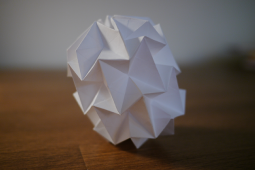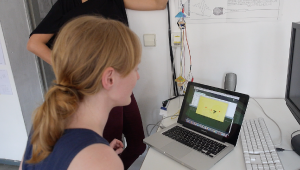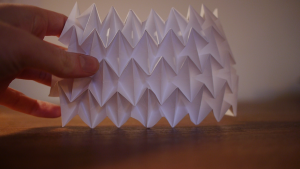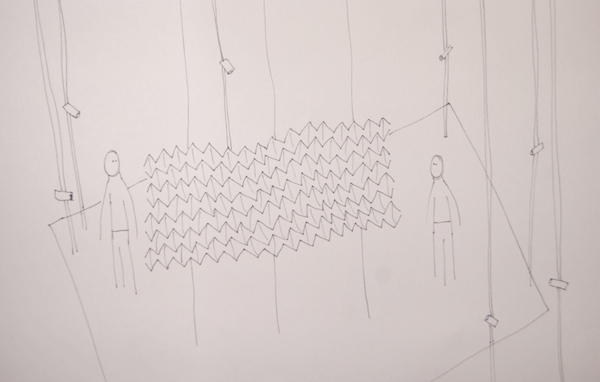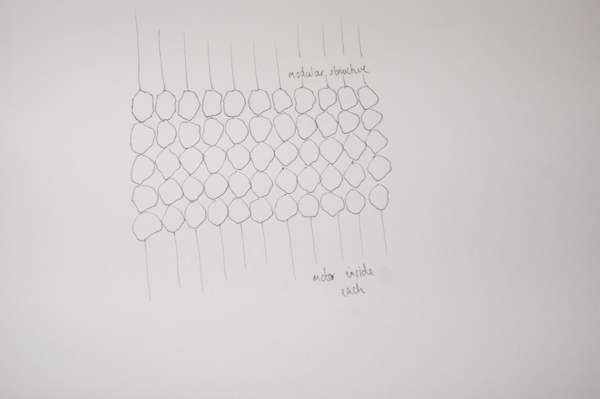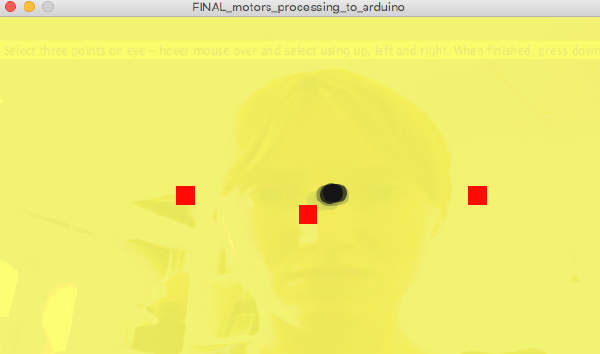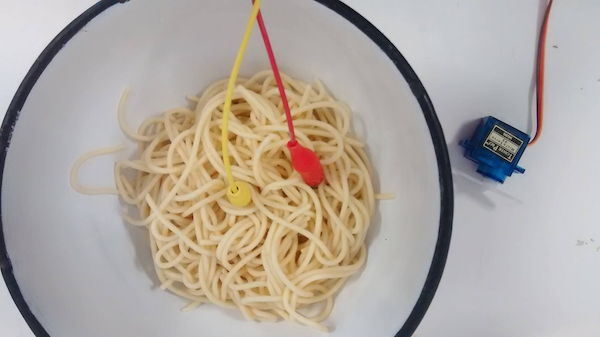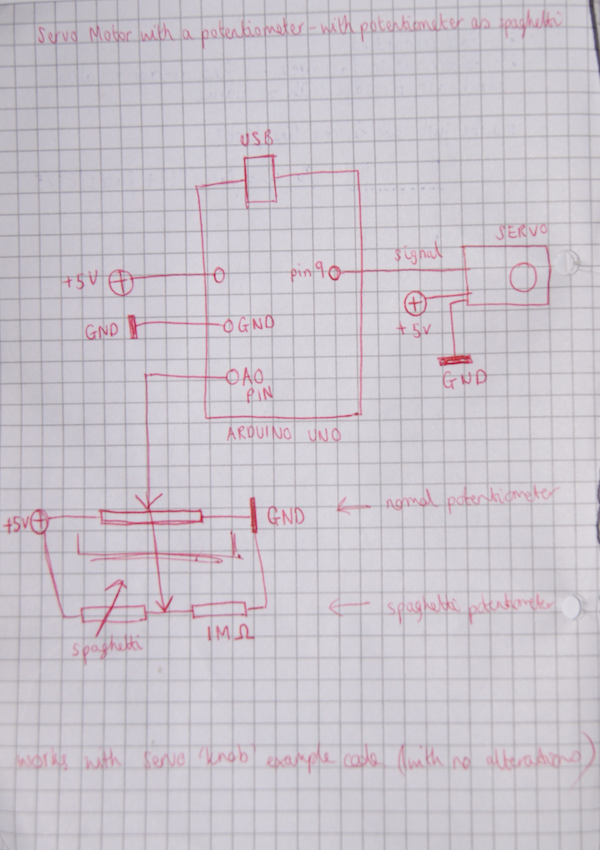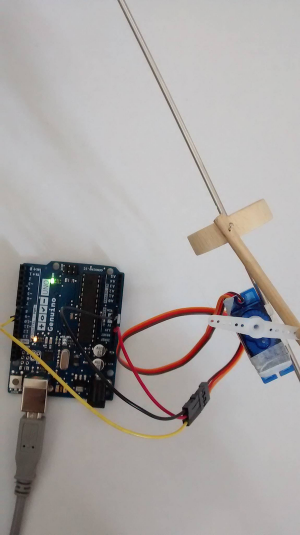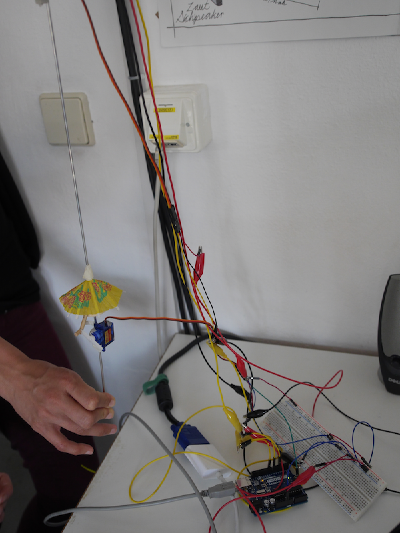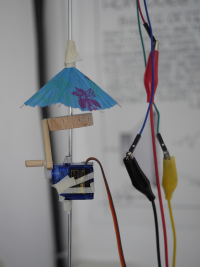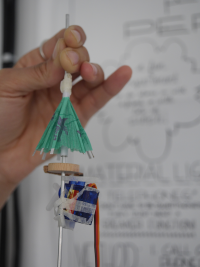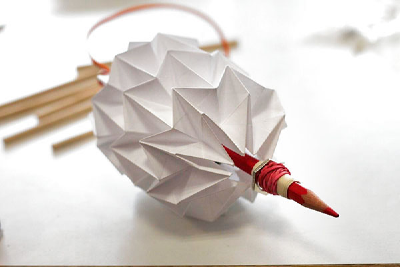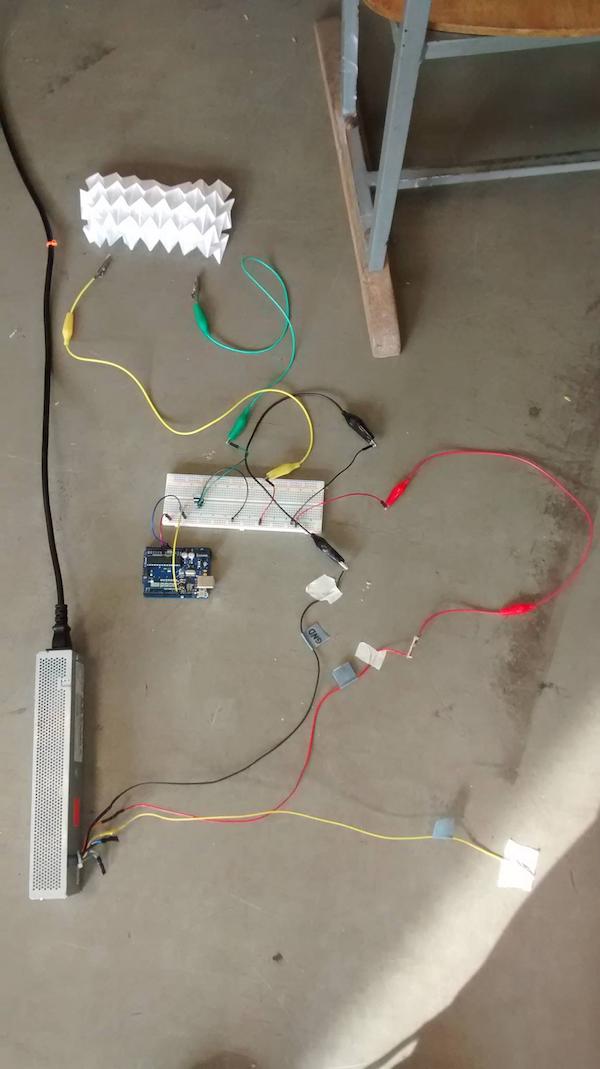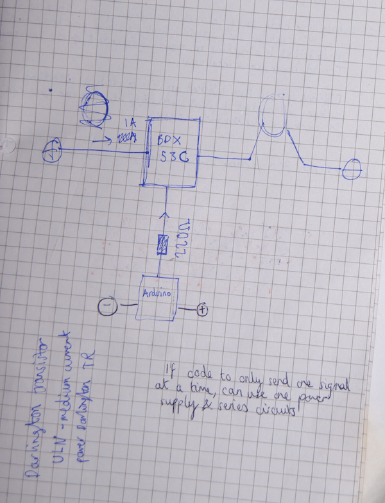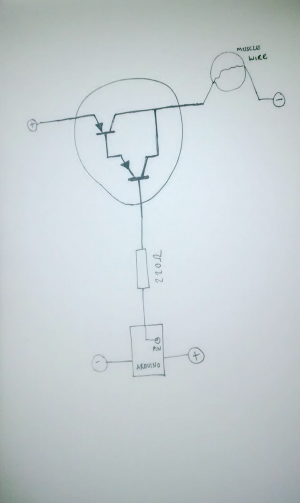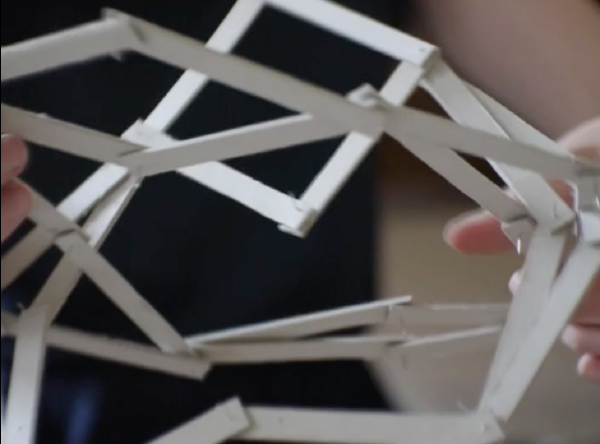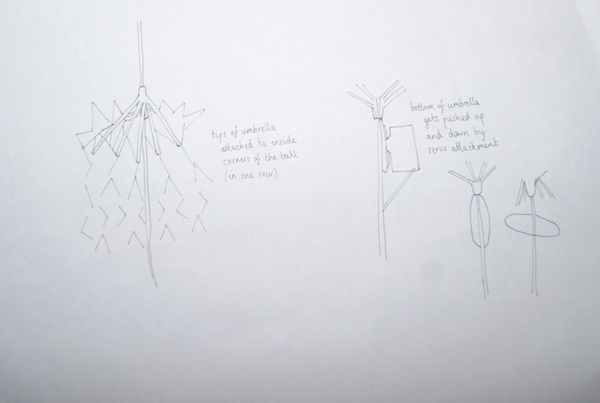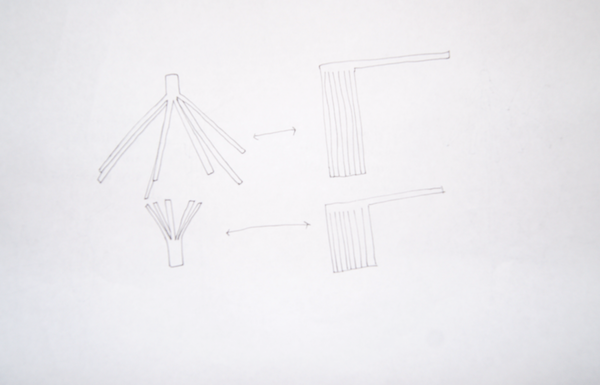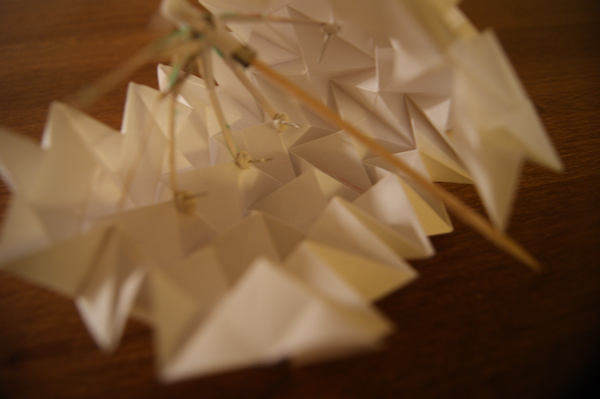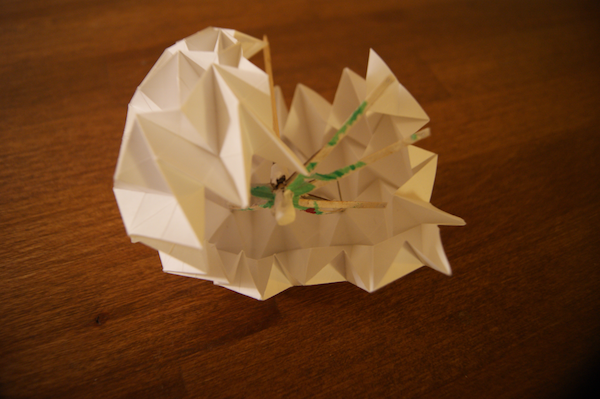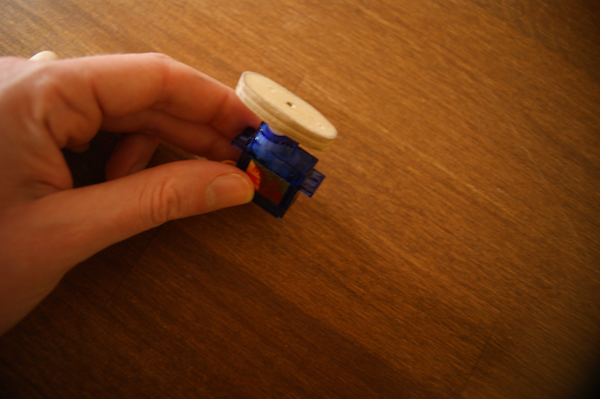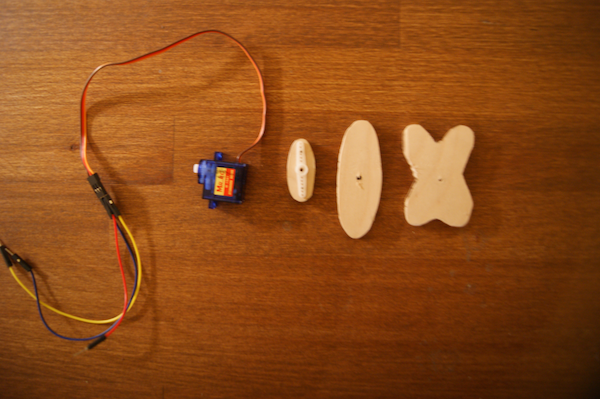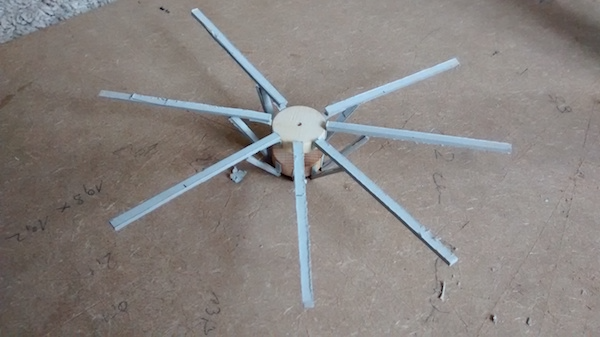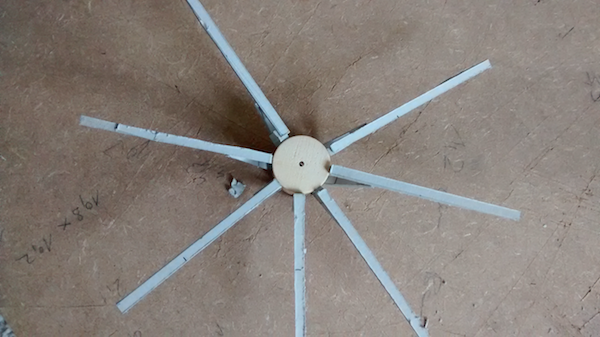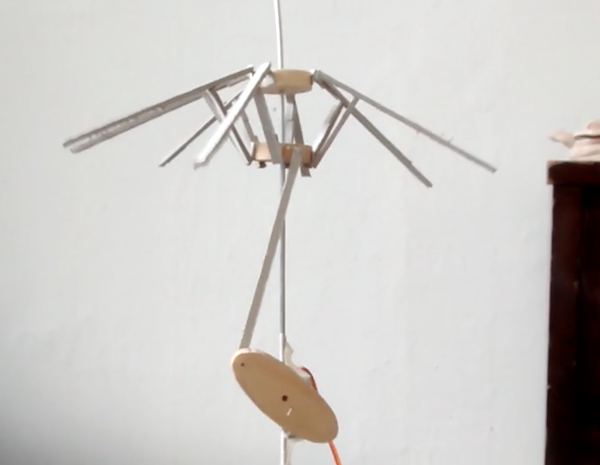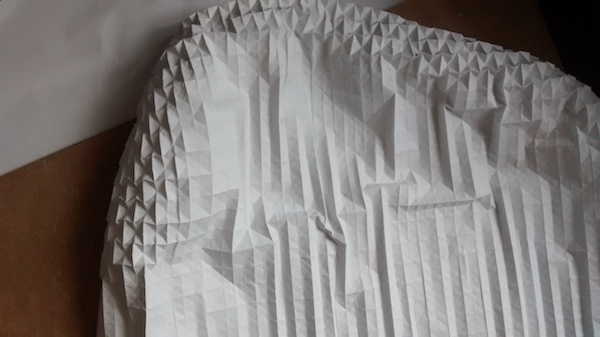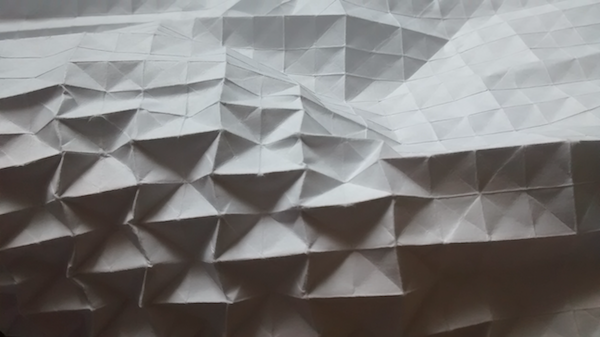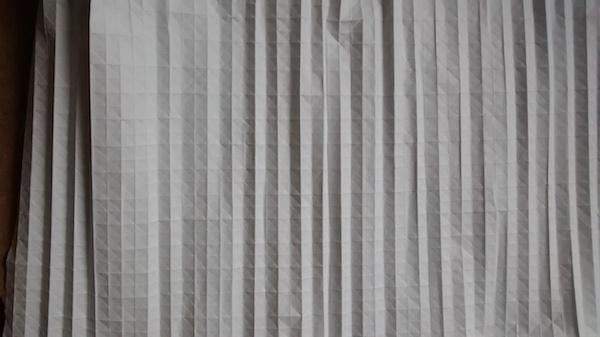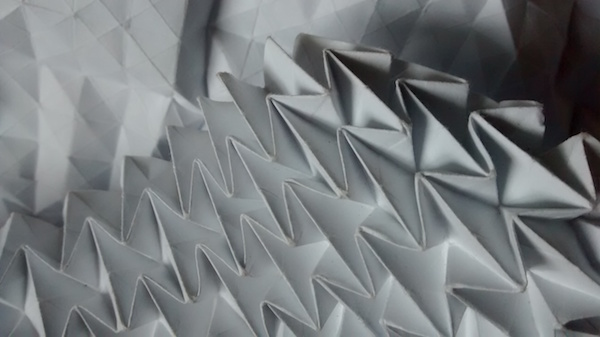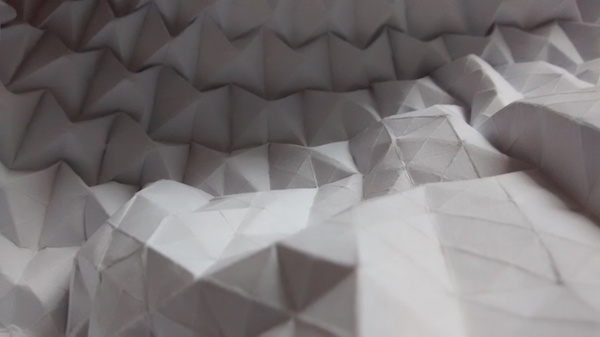No edit summary |
No edit summary |
||
| (35 intermediate revisions by the same user not shown) | |||
| Line 1: | Line 1: | ||
Project Overview | '''Project Overview''' | ||
In this course I wanted to develop an interactive object for use with the performance platform, the idea being that the tracking system would sense human movement and send this data to the object. | |||
[[File:Origami2.png|255px]] | |||
[[File:Umbrella2.png|300px]] | |||
[[File:Origami1.png|300px]] | |||
In this course I wanted to develop an interactive object for use with the performance platform, the idea being that the tracking system would sense human movement and send this data to the object which, in turn, would respond. Eventually, I want to build a wall/curtain structure which will hang in between two people and act as a medium of communication. I am particularly interested in the small and subconscious movements made by humans while interacting and will concentrate on eye gaze as my sensory input. | |||
The wall will be made up of units, each an origami structure with the ability to move individually in response to the eye movements of the interactors. In this course I have experimented with various ways of achieving this movement and also with various sensory inputs. | |||
Outline of installation in performance platform (12 cameras surrounding for tracking) | |||
One continuous origami structure | |||
[[File:Rssketch1.png]] | |||
Units of origami | |||
[[File:Rssketch2.png]] | |||
[https://www.uni-weimar.de/medien/wiki/GMU:Human_and_Nonhuman_Performances_II_SS16/Rachel_Smith Link to main project] | [https://www.uni-weimar.de/medien/wiki/GMU:Human_and_Nonhuman_Performances_II_SS16/Rachel_Smith Link to main project] | ||
'''Technical Implementation''' | |||
For the sensor I have used an eye tracking processing sketch, developed in a previous course and tweaked it to send messages to arduino when your eyes hit certain targets on the screen. Each target sets off a different motor. The communication between the two programmes works using the serial port. | |||
[https://vimeo.com/163158806 Link to video of eye tracking programme] | |||
[[File:Shrs5.png|600px]] | |||
*[[/Link to processing code /]] | |||
*[[/Link to Arduino code /]] | |||
As an alternative sensor, I also made a spaghetti sensor by using the variable resistance inherent in cooked spaghetti as part of a voltage divider. Attached to an analogue Arduino input, I was able to get a motor to respond to my hand moving around in the bowl. | |||
[[https://vimeo.com/170165232 video here]] | |||
I then used the spaghetti sensor in another project [[https://www.uni-weimar.de/medien/wiki/GMU:Digital_Puppetry_Lab/Group_Leif/Rachel/Kei see here]], using OSC to send these analogue signals to max msp and Unity. | |||
[[File:Shrs1.png]] | [[File:Shrs1.png]] | ||
[[File:Shrs2.png]] | |||
Schematic for spaghetti sensor | |||
[[File:Rsschematic1.png]] | |||
'''Protoyping Experiments''' | |||
[[File:Shrs2.png| 300px]] | |||
[[File:Rssh12.png|400px]] | |||
[[File:Rssh10.png|200px]] | |||
[[File:Rssh11.png|200px]] | |||
[[File:Shrs4.png| 400px]] | |||
[https://vimeo.com/169906515 Video showing the development of servo motion] | |||
[https://www.youtube.com/watch?v=tGhcTwIJ4Es Link to a nice (if you mute it) youtube tutorial about how to fold this type of origami] | |||
'''Using Muscle Wire''' | |||
Here is an experiment with 'Muscle Wire' which shrinks when certain currents are applied. I tried sewing it into the paper to see what kinds of movement could happen. It resulted in subtle, slow movements which were too slight for this project. Muscle wire also turned out to be quite complicated to use. It is easy to burn it out by applying too much current or an appropriate amount of current for too long resulting in it becoming unresponsive. I think it could be an interesting material to work with in the future but needs a lot more research/experimentation. For this reason I went back to working with servo motors. | |||
[http://makezine.com/2012/01/31/skill-builder-working-with-shape-memory-alloy/ Link to a Make article about using muscle wire, I found this useful] | |||
[[File:Shrs3.png]] | [[File:Shrs3.png]] | ||
[[File: | |||
Schematic for muscle wire | |||
Here the transistor is needed to provide the muscle wire with enough current whilst not drawing too much current from the Arduino and therefore preventing it from breaking. | |||
[[File:Rsschematic2.png|385px]] | |||
[[File:schematic2rs.png|300px]] | |||
'''Expanding Circles Experiments''' | |||
Here is another experiment with mechanisms for opening and closing the origami balls. This time I made expanding circles by fitting together sections of squares - The idea being to place a motor in the middle, twisting the structures. In the end this turned out to be much more complicated than the umbrella idea so I discontinued but I really liked the variety of shapes which were made just from squares. | |||
[[File:expandingcirlces.png|600px]] | |||
[https://vimeo.com/177207484 Video of this here] | |||
''' | |||
Fitting together umbrellas, servos and origami''' | |||
I needed to find a way of translating circular motion (of the servo) into push-pull motion to control the umbrella structure. I made little wooden attachments for the servo propeller which I thought could push directly against the bottom of the internal umbrella structure, moving it up and down regularly in different patterns. It turned out that this approach put too much force onto the servo and caused it to stop turning. Then I attached a wooden stick between the propeller and the bottom 'pushing' part of the umbrella. This worked well but didn't allow enough range of pushing, due to the size of the propeller. I solved this by putting on of my wooden propeller adaptions on, and then connecting the umbrella with this. I found that with a large oval shape a far bigger range could be achieved. | |||
[[File:Umbrella8.png]] | |||
[[File:Umbrella9.png]] | |||
[[File:Umbrella4.png]] | |||
[[File:Umbrella5.png]] | |||
[[File:Umbrella6.png]] | |||
[[File:Umbrella7.png]] | |||
[[File:sensorhl1.png]] | |||
[[File:sensorhl2.png]] | |||
[[File:shrs8.png]] | |||
[https://vimeo.com/177210267 Video of servo moving umbrella mechanism] | |||
Here I managed to get the servo and umbrella mechanism working with the spaghetti sensor but when I attached the umbrella spokes to the origami, the tension became too much for the motor. To get round this problem I thought of trying to make less tension in the paper by using thinner paper and smaller folds. I have started to fold the structure underneath (which is taking an incredibly long time) and will test this soon. | |||
[[File:sensorhl3.png]] | |||
[[File:sensorhl4.png]] | |||
[[File:sensorhl5.jpg]] | |||
[[File:sensorhl6.jpg]] | |||
[[File:sensorhl7.jpg]] | |||
The full realisation of this project will be documented [https://www.uni-weimar.de/medien/wiki/GMU:Human_and_Nonhuman_Performances_II_SS16/Rachel_Smith here] when complete. | |||
Latest revision as of 12:49, 2 August 2016
Project Overview
In this course I wanted to develop an interactive object for use with the performance platform, the idea being that the tracking system would sense human movement and send this data to the object which, in turn, would respond. Eventually, I want to build a wall/curtain structure which will hang in between two people and act as a medium of communication. I am particularly interested in the small and subconscious movements made by humans while interacting and will concentrate on eye gaze as my sensory input.
The wall will be made up of units, each an origami structure with the ability to move individually in response to the eye movements of the interactors. In this course I have experimented with various ways of achieving this movement and also with various sensory inputs.
Outline of installation in performance platform (12 cameras surrounding for tracking)
One continuous origami structure
Units of origami
Technical Implementation
For the sensor I have used an eye tracking processing sketch, developed in a previous course and tweaked it to send messages to arduino when your eyes hit certain targets on the screen. Each target sets off a different motor. The communication between the two programmes works using the serial port.
Link to video of eye tracking programme
*Link to processing code
*Link to Arduino code
As an alternative sensor, I also made a spaghetti sensor by using the variable resistance inherent in cooked spaghetti as part of a voltage divider. Attached to an analogue Arduino input, I was able to get a motor to respond to my hand moving around in the bowl.
I then used the spaghetti sensor in another project [see here], using OSC to send these analogue signals to max msp and Unity.
Schematic for spaghetti sensor
Protoyping Experiments
Video showing the development of servo motion
Link to a nice (if you mute it) youtube tutorial about how to fold this type of origami
Using Muscle Wire
Here is an experiment with 'Muscle Wire' which shrinks when certain currents are applied. I tried sewing it into the paper to see what kinds of movement could happen. It resulted in subtle, slow movements which were too slight for this project. Muscle wire also turned out to be quite complicated to use. It is easy to burn it out by applying too much current or an appropriate amount of current for too long resulting in it becoming unresponsive. I think it could be an interesting material to work with in the future but needs a lot more research/experimentation. For this reason I went back to working with servo motors.
Link to a Make article about using muscle wire, I found this useful
Schematic for muscle wire
Here the transistor is needed to provide the muscle wire with enough current whilst not drawing too much current from the Arduino and therefore preventing it from breaking.
Expanding Circles Experiments
Here is another experiment with mechanisms for opening and closing the origami balls. This time I made expanding circles by fitting together sections of squares - The idea being to place a motor in the middle, twisting the structures. In the end this turned out to be much more complicated than the umbrella idea so I discontinued but I really liked the variety of shapes which were made just from squares.
Fitting together umbrellas, servos and origami
I needed to find a way of translating circular motion (of the servo) into push-pull motion to control the umbrella structure. I made little wooden attachments for the servo propeller which I thought could push directly against the bottom of the internal umbrella structure, moving it up and down regularly in different patterns. It turned out that this approach put too much force onto the servo and caused it to stop turning. Then I attached a wooden stick between the propeller and the bottom 'pushing' part of the umbrella. This worked well but didn't allow enough range of pushing, due to the size of the propeller. I solved this by putting on of my wooden propeller adaptions on, and then connecting the umbrella with this. I found that with a large oval shape a far bigger range could be achieved.
Video of servo moving umbrella mechanism
Here I managed to get the servo and umbrella mechanism working with the spaghetti sensor but when I attached the umbrella spokes to the origami, the tension became too much for the motor. To get round this problem I thought of trying to make less tension in the paper by using thinner paper and smaller folds. I have started to fold the structure underneath (which is taking an incredibly long time) and will test this soon.
The full realisation of this project will be documented here when complete.
